Introduction
Having someone to hold your torch so you can have both hands free is useful in many situations, especially if they are good at pointing it where you want to see and of course, not in your eyes. When no such brilliant helper can be found, a head torch can do just as good a job.
Head torches come in many different varieties, ranging from low CRI - high output, to illuminate large areas to high CRI - low output, for illuminating closer, with better quality light.
Sofirn sent us one of their head torches to review, that can combine both: The Sofirn HS20.

The Sofirn HS20 is a dual head lamp, with independent controls for a high output - low CRI and a low(er) output - high CRI emitter. This sounds like a brilliant idea, so let's delve into it and see how they've done!
Unboxing
The Sofirn HS20 comes in a generic brown box with the company logo stamped on the top and a sticker specifying the exact model it contains. The torch and all the accessories are tucked inside in no particular order.
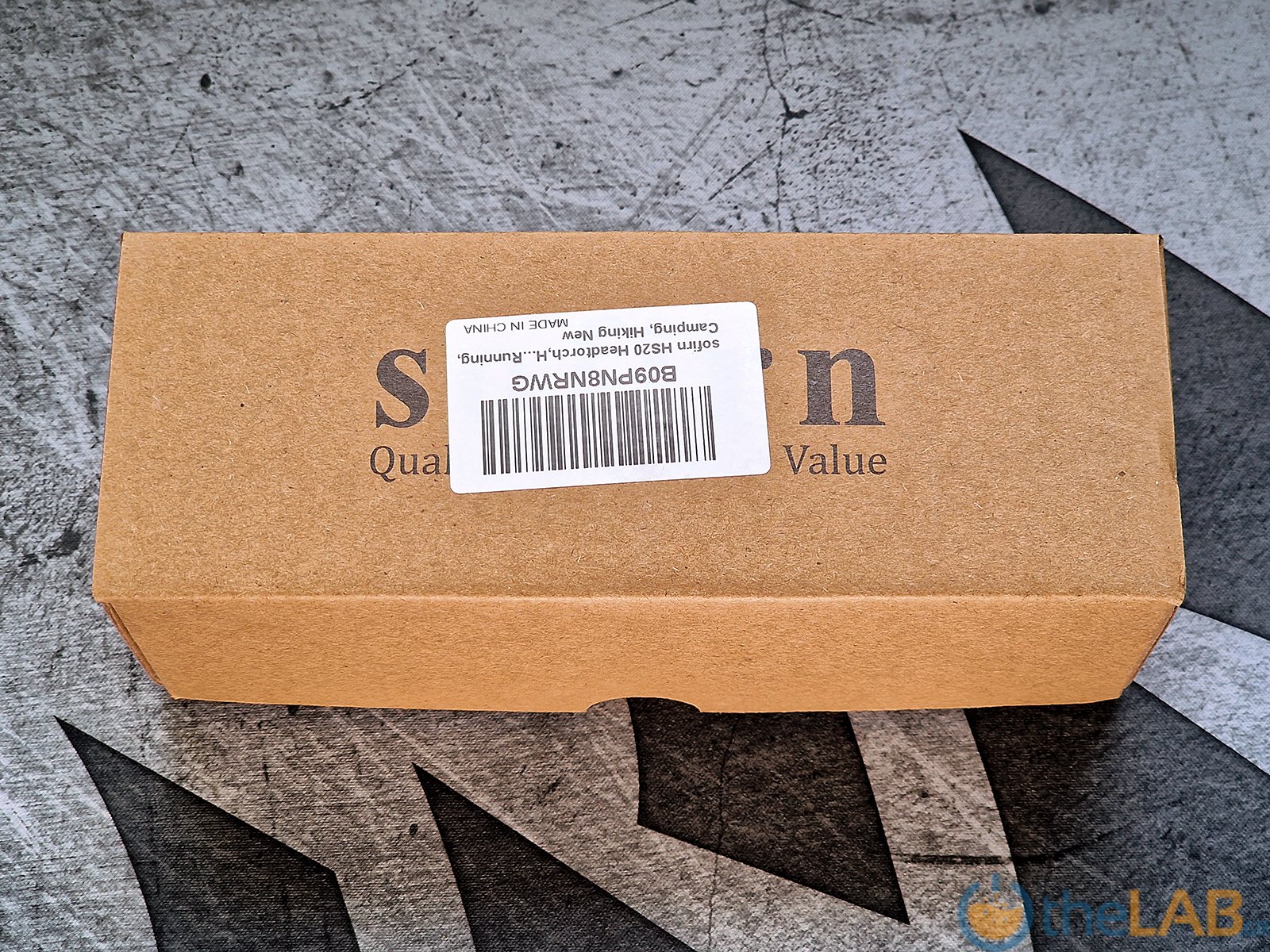
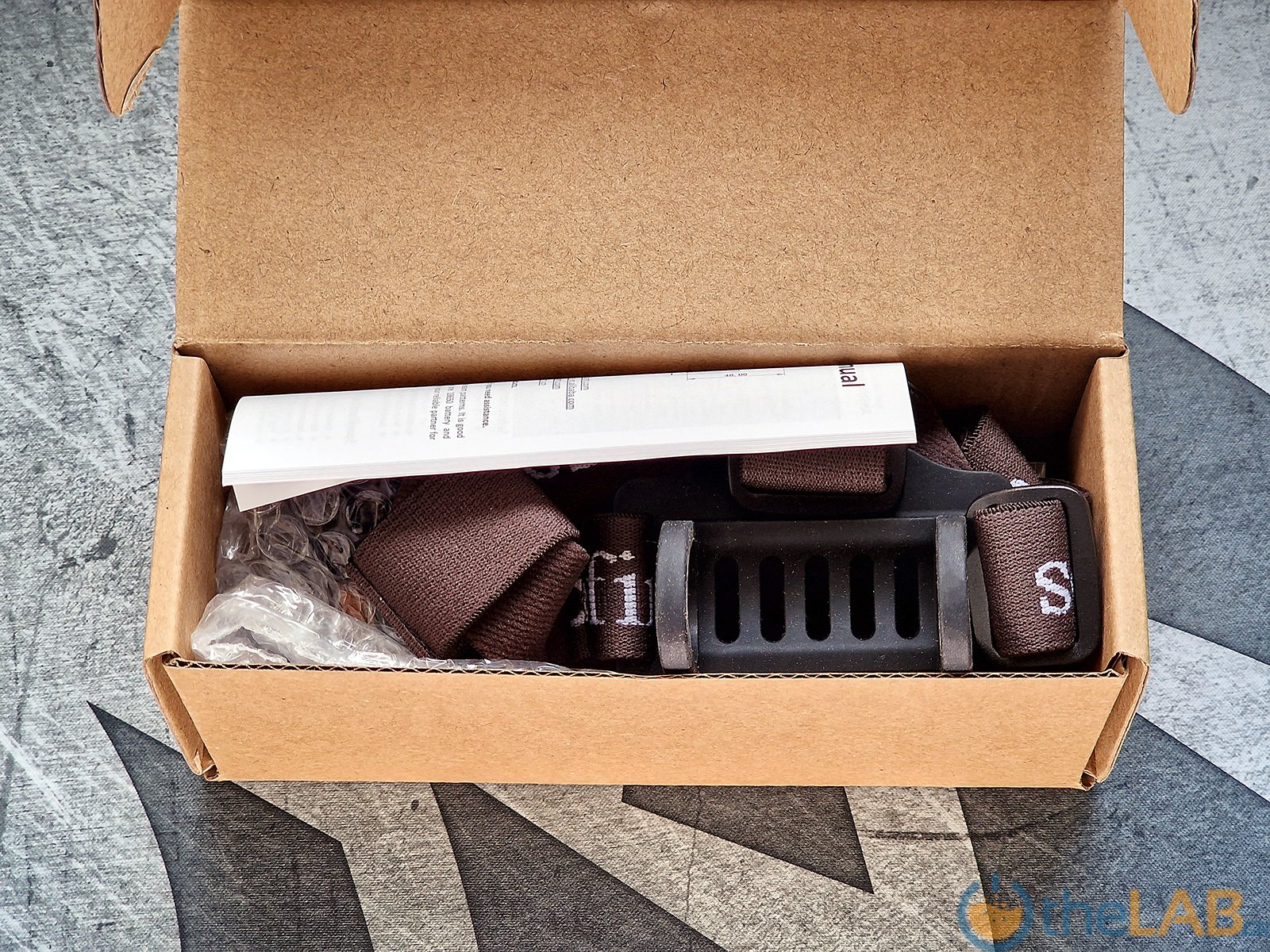
The accessories include a 1m (3ft) long USB A to USB C charging cable, 2 spare O-rings, the head strap and the manual. The torch itself comes protected in a bubble-wrap bag.
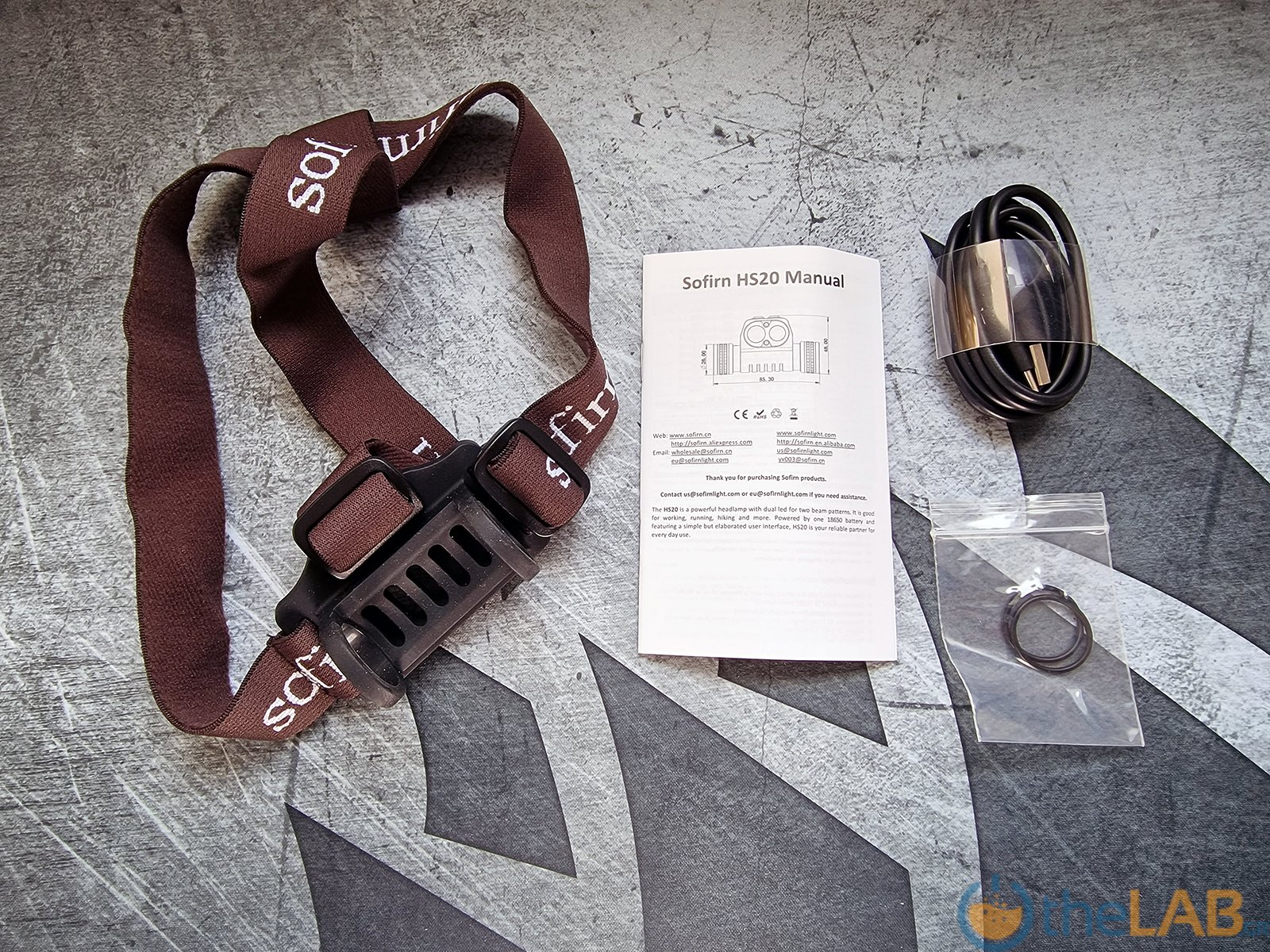

There is a label on the torch, held with a rubber band, reminding the end user to remove the insulation paper from the battery (which is shipped inside the torch) so the torch can function.

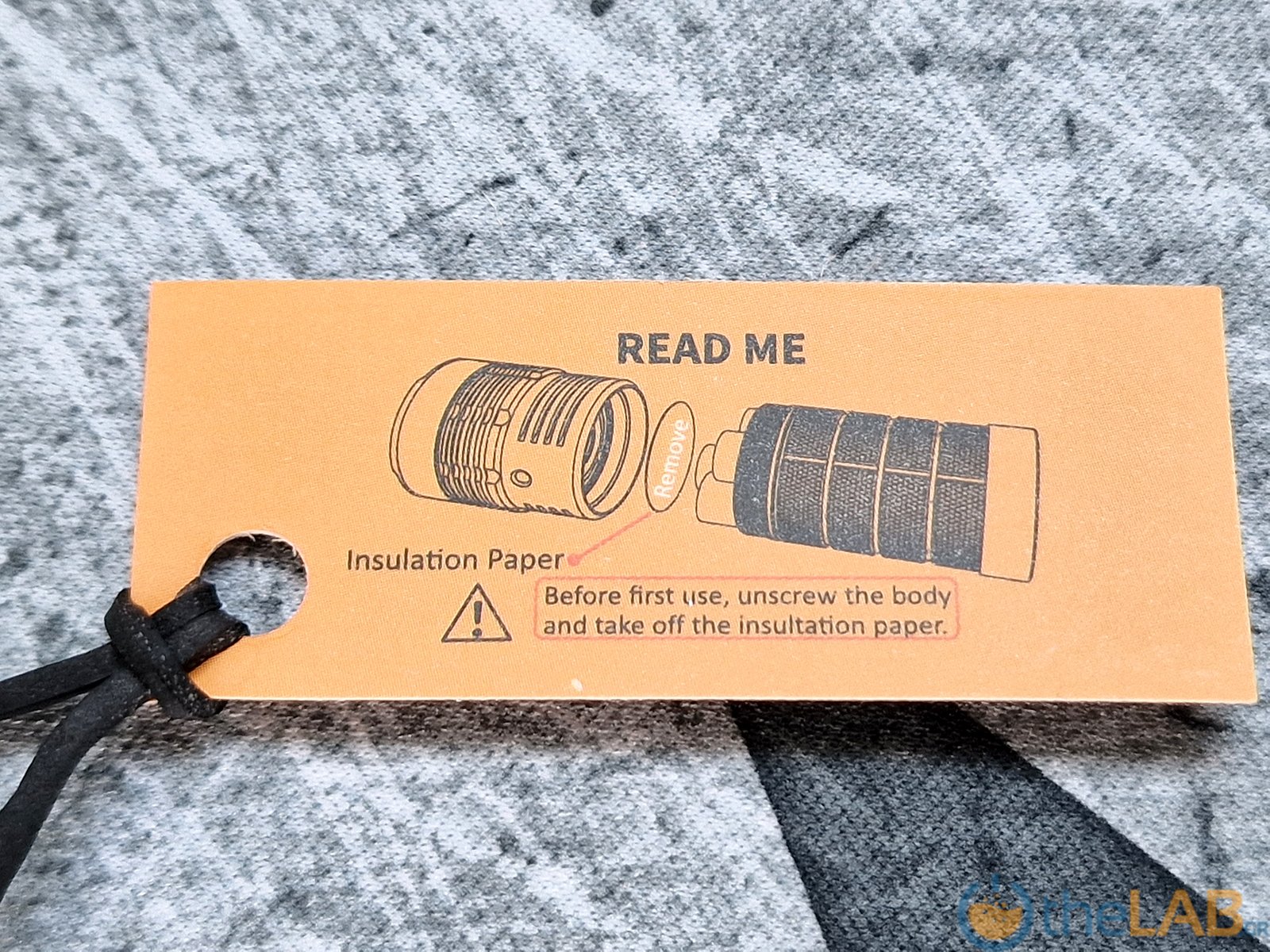

The design of the Sofirn HS20 makes it a dedicated head torch, as it is not convenient to operate in hand. It consists of a tube, with 2 end caps and a protrusion in the middle of the tube, which houses the 2 emitters and their optics.

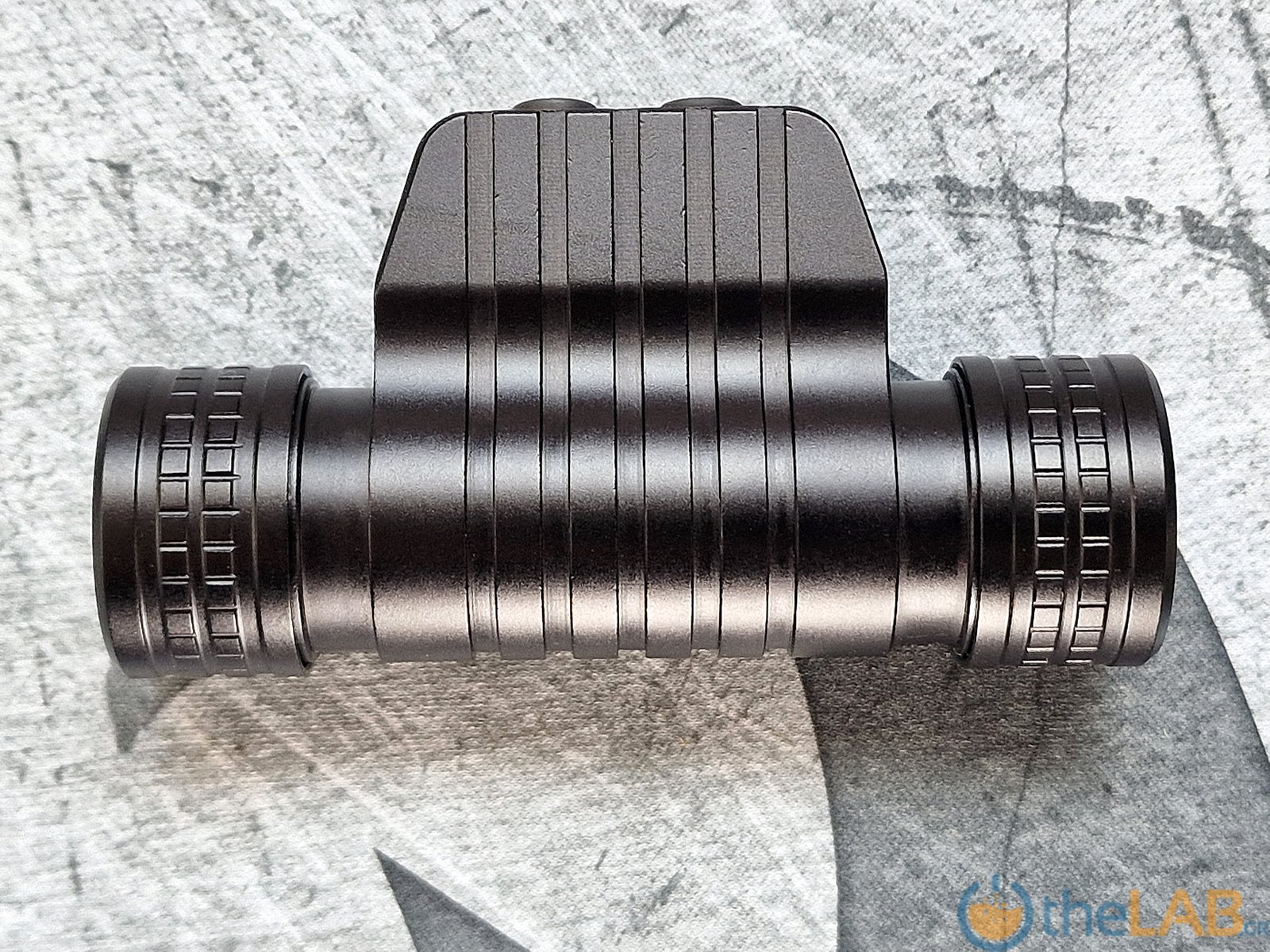
On top of the protrusion there are 2 buttons, to control the 2 emitters separately.


The emitter on the left (as you face the torch) is a Cree XHP50.2 inside an orange peel reflector. Despite being marketed as a spotlight, this configuration with a large dye emitter and a shallow, orange peel reflector is not going to focus the light into a narrow beam and have a lot of throw. I consider it instead to be the high output option.
The emitter on the right is a Samsung LH351D CRI90 behind a TIR optic, which is protected by a glass lens. This is marketed as a flood light and indeed the TIR optic makes it floody. It is also the high CRI, lower output option.

One of the end caps is marked with the USB symbol. The other has the mandatory CE / RoHS / do not throw in the bin markings.


Unscrewing the USB marked end cap reveals the USB C charging port. Unscrewing the other end cap reveals the battery, with the insulating paper on top.
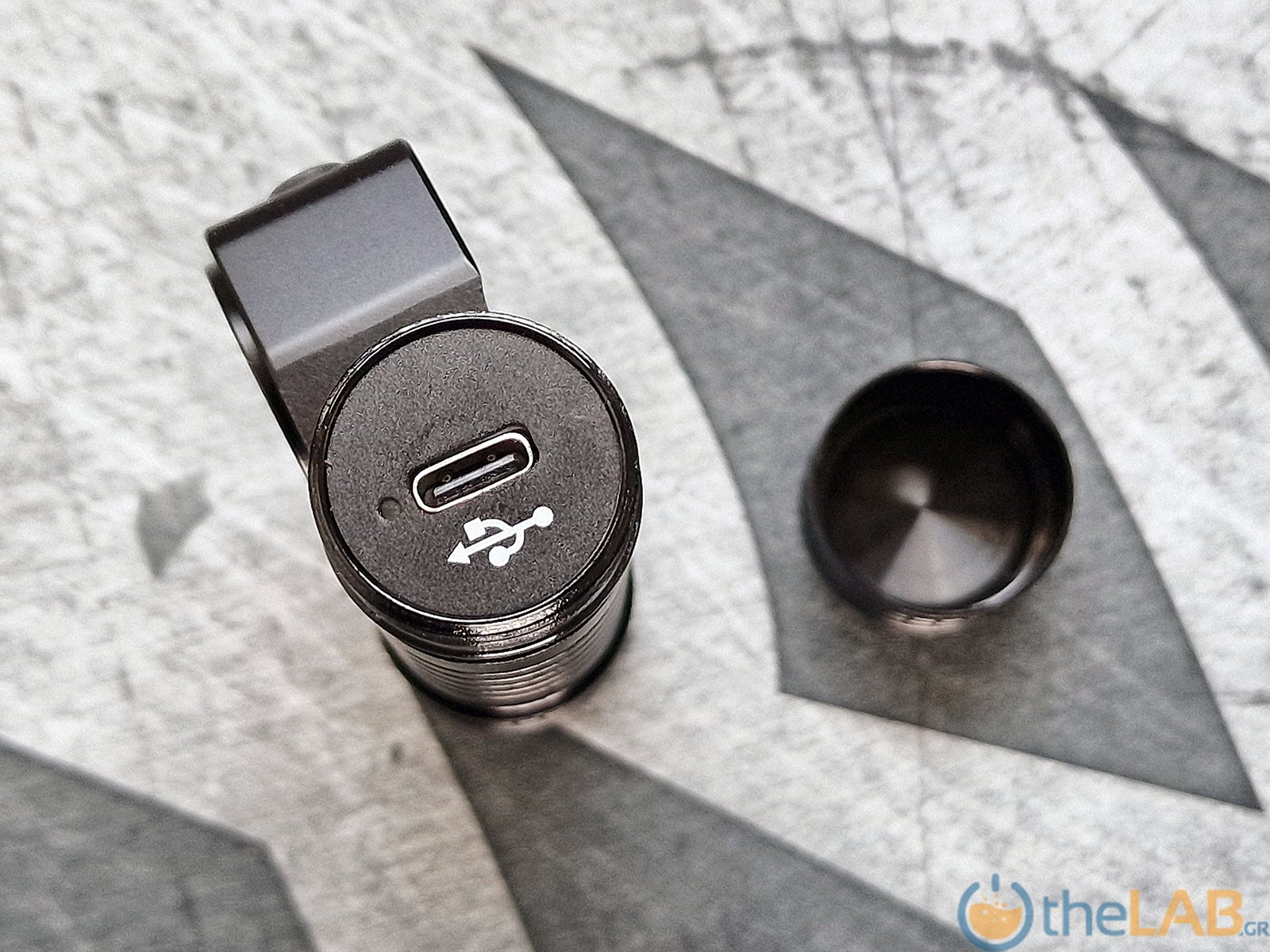

The battery is a Sofirn branded, button top, 3000mAh, 18650, Li-Ion battery.
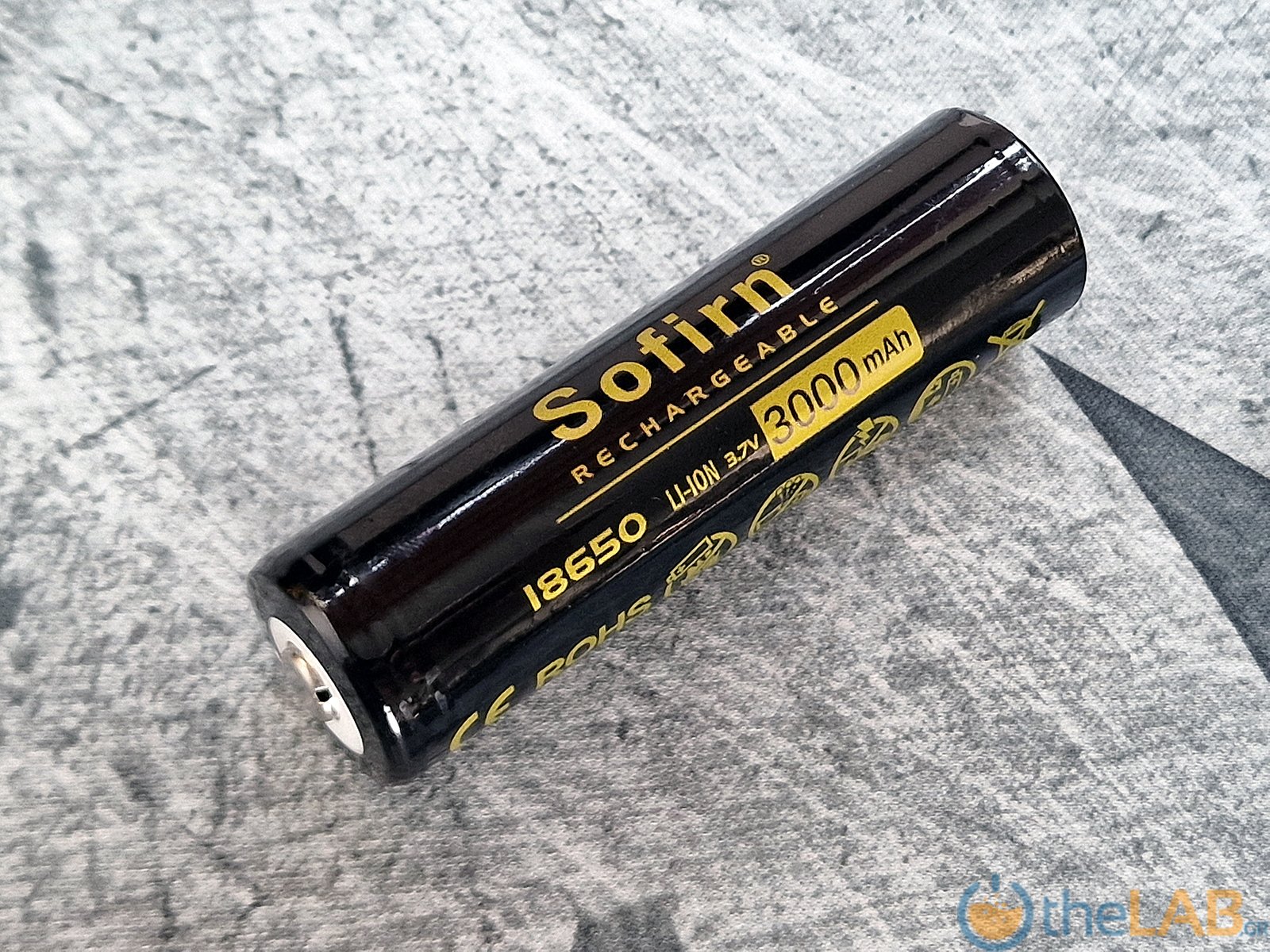
A brass puck at the back of the driver PCB makes contact with the positive terminal of the battery while a thick, good quality spring on the end cap makes contact with the negative terminal.

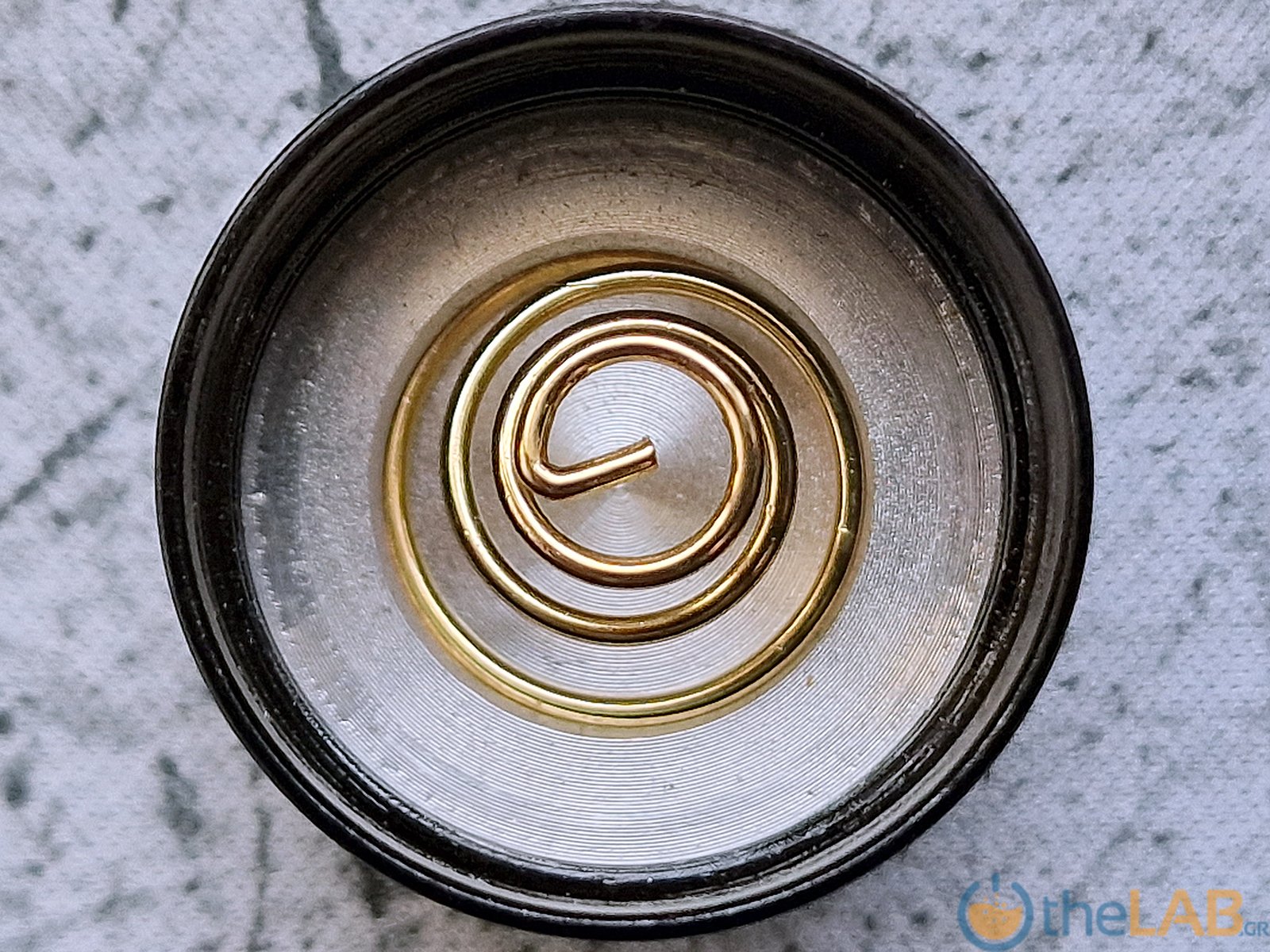
The torch fits securely in the silicone cradle of the head band and the straps are soft and adjustable.

Build Quality
The build quality of the Sofirn HS20 is... OK. All parts fit together nicely and the anodization is uniform but there are some milling defects that can be seen under the anodization, especially on the edges of the milled grooves at the back. This has no functional consequences whatsoever, of course, but it detracts from the aesthetics.
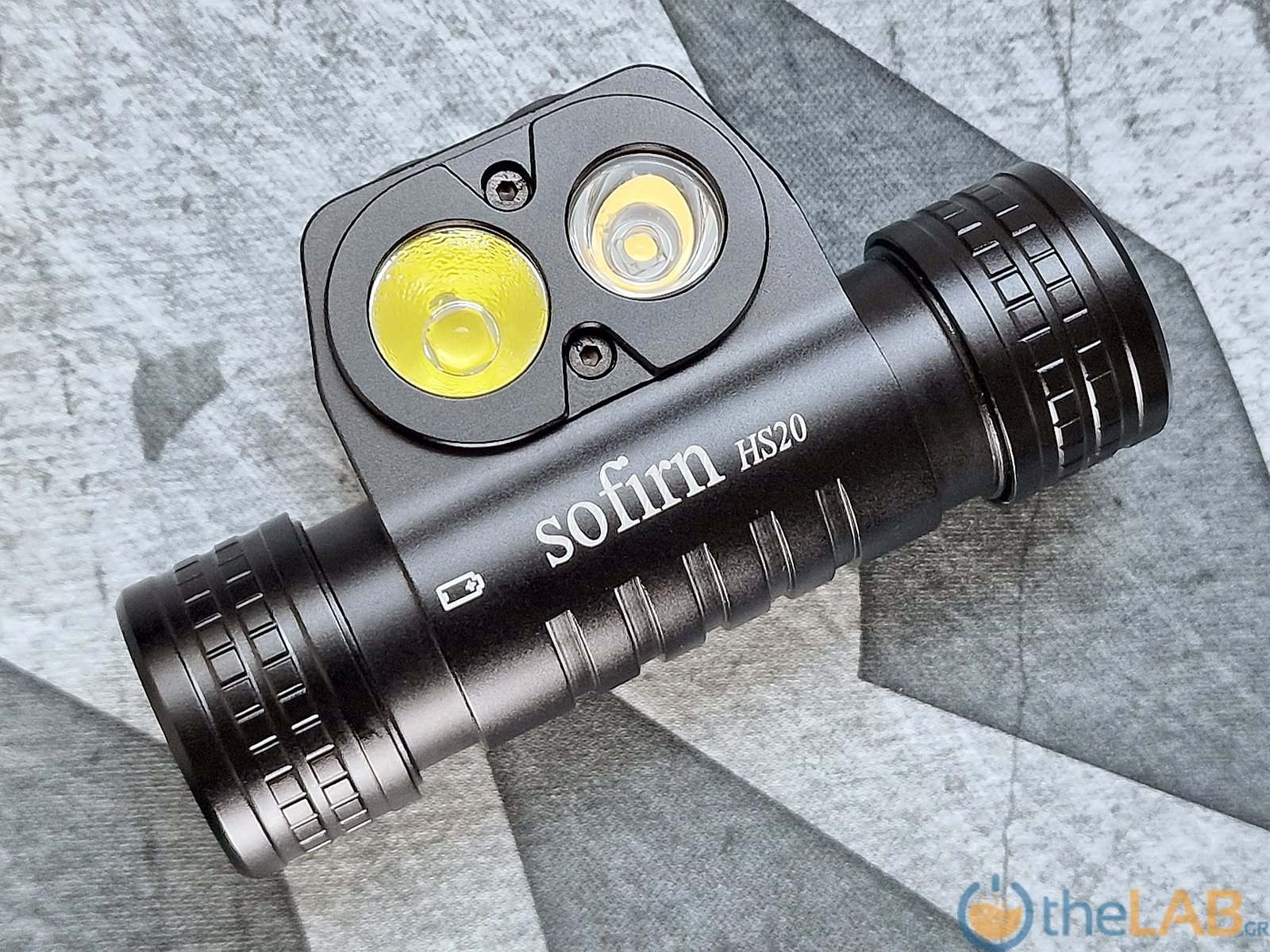

Specifications
The specifications of the Sofirn HS20 as found on the company's website can be viewed below.
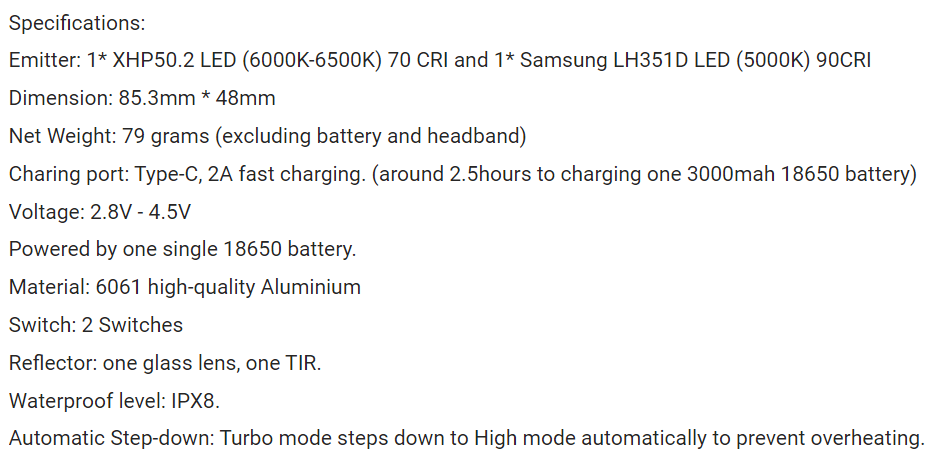
The high output Cree XHP50.2 emitter has a CCT of 6000K-6500K and a CRI of 70 while the high CRI Samsung LH351D emitter has a CCT of 5000K and a CRI of 90.
The USB C port facilitates fast charging with 2A current and can charge the included battery in 2.5 hours.
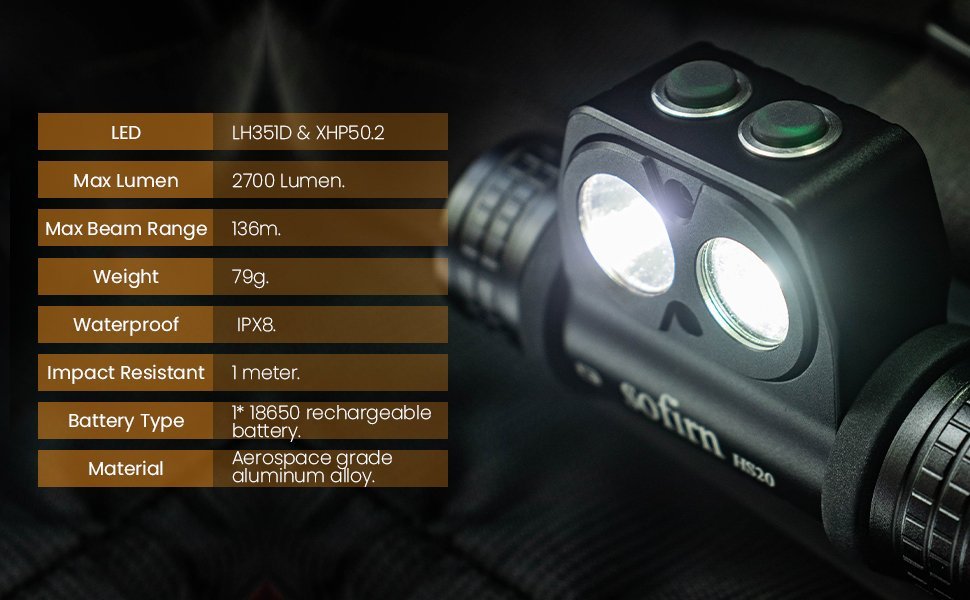
User Interface
The Sofirn HS20 features one switch per emitter, for fully independent control.
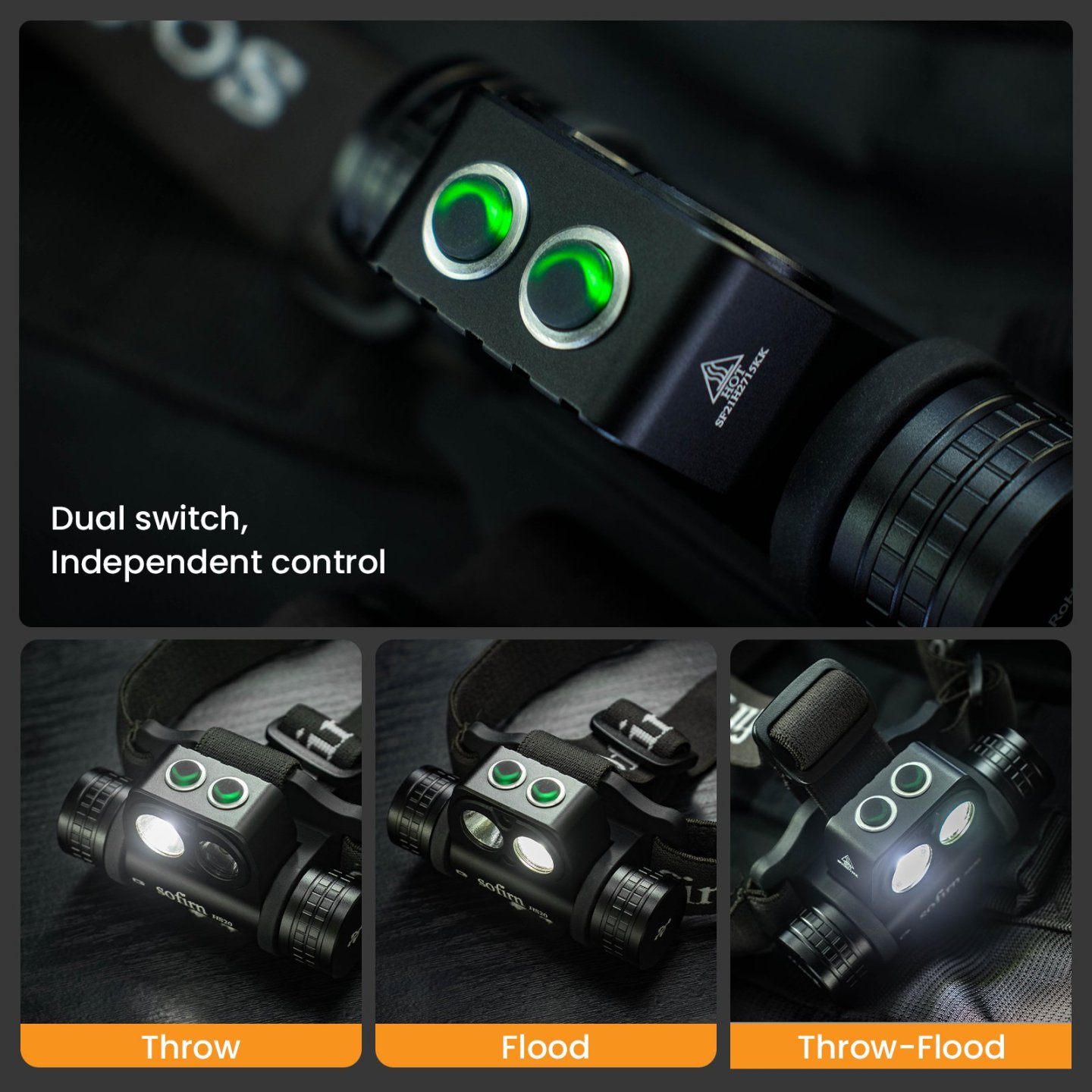
From OFF:
- Click throw / flood button to turn on throw / flood emitter. Press and hold to select modes low / medium / high. Click to turn off.
- Double click throw / flood button to turn on throw / flood emitter on Turbo. Click to turn off.
- Triple click any button to activate lock out. The flood emitter will flash twice. Clicking any button while in lock out mode will make the flood emitter flash twice to indicate the torch is in lock out mode. Triple click throw / flood button to go out of lockout mode and turn on the throw / flood emitter.
- Press and hold throw / flood button to turn on throw / flood emitter on Eco mode. Keep holding for more then 1sec to go to and cycle through the standard modes: low / medium / high. Click to turn off.
From ON:
- Click the throw / flood button to turn off the throw / flood emitter.
- Double click the throw / flood button to go to Turbo on the throw / flood emitter. Click to return to the previous mode.
- Triple click any button to cycle through throw / flood / throw + flood.
- Long press the throw / flood button to select modes low / medium / high on the throw / flood emitter. Click to turn off.
The switches are also lit, to provide information on the battery level.
Modes and Run Times
The Sofirn HS20 has 5 modes for each emitter: Eco, Low, Medium, High and Turbo.
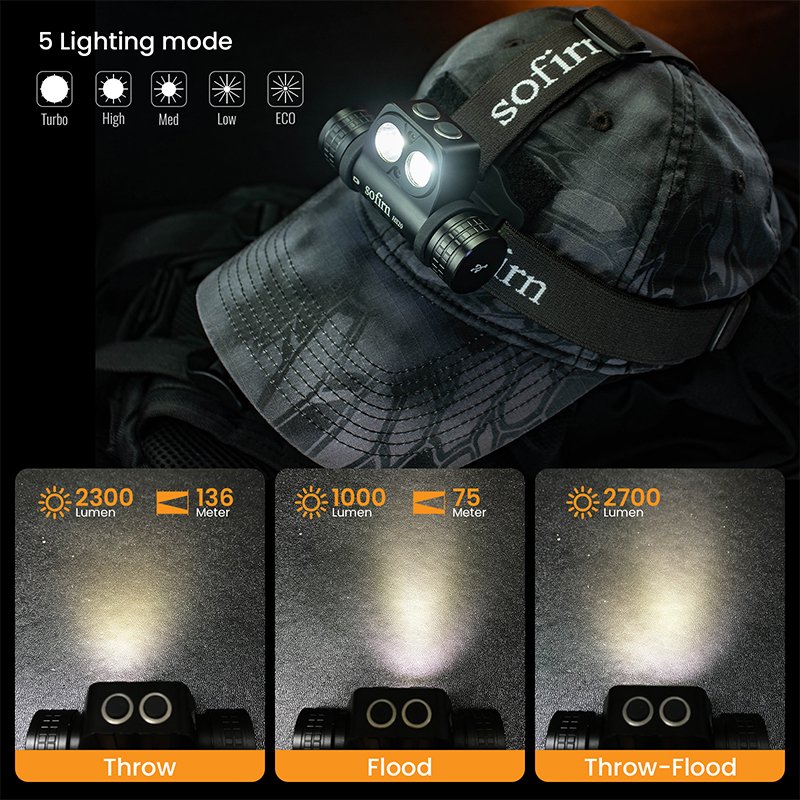
The output of each mode for each emitter as well as the 2 emitters combined together, according to Sofirn, is shown in the following table.
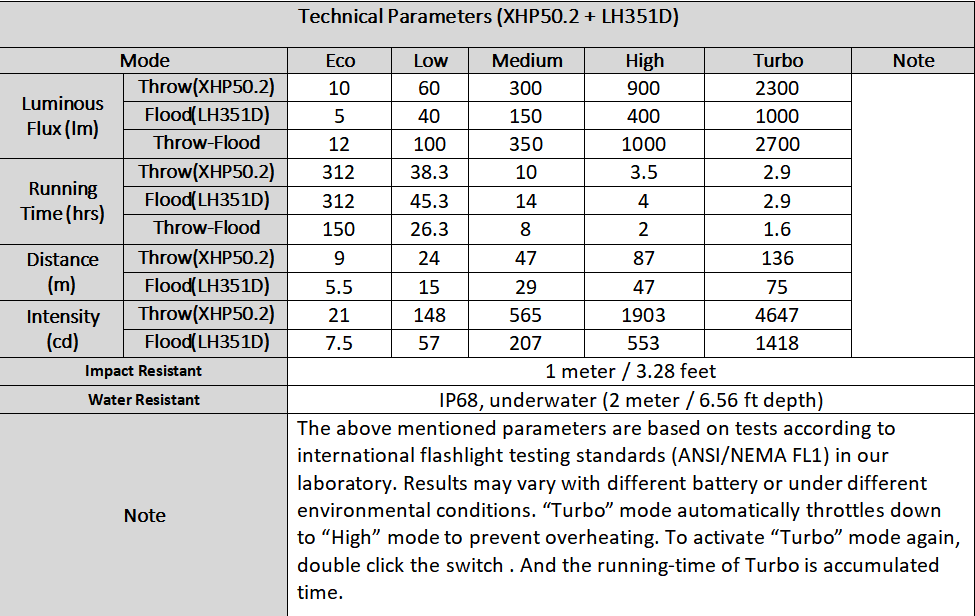
My measurements are in the table below in orange, while the company specifications are in black. It looks like the specifications of the Sofirn HS20 are quite accurate!

Size Comparison
Here is a side by side photo of the Sofirn HS20 with the Sofirn HS10. The Sofirn HS20 is quite compact for a dual emitter head torch with a 18650 battery.

Photometry
I took some photometry readings with an Opple Light Master Pro. The results are in the following table.
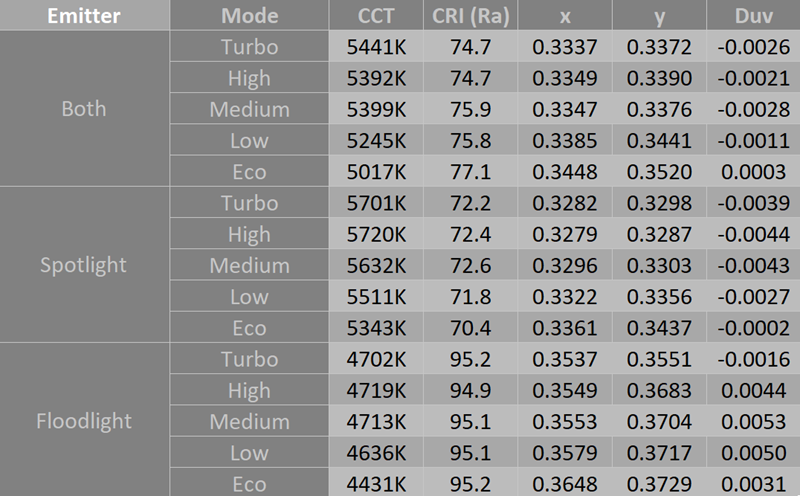
The CCTs of both emitters seem to be warmer than spec. The CRI readings are what is expected.
On the other hand, it looks like the Opple Light master pro has trouble reading the Duv of the Cree XHP50.2 emitter, which, as you can see in the following photos, taken with a white balance of 5500K, is definitely not on the rosy side.
The photos show the Sofirn HS20 on the right, compared to the Sofirn HS10 on the left. The Sofirn HS10 uses a Samsung LH351D 5000K emitter, which is the same with the Sofirn HS20 flood emitter.
On the first photo we see the Sofirn HS20 spot light, on the second the flood light and on the third, both.



Beam Profile
As there are 2 emitters with their separate optics in the Sofirn HS20, we have 2 beam profiles and of course, the combination of both.

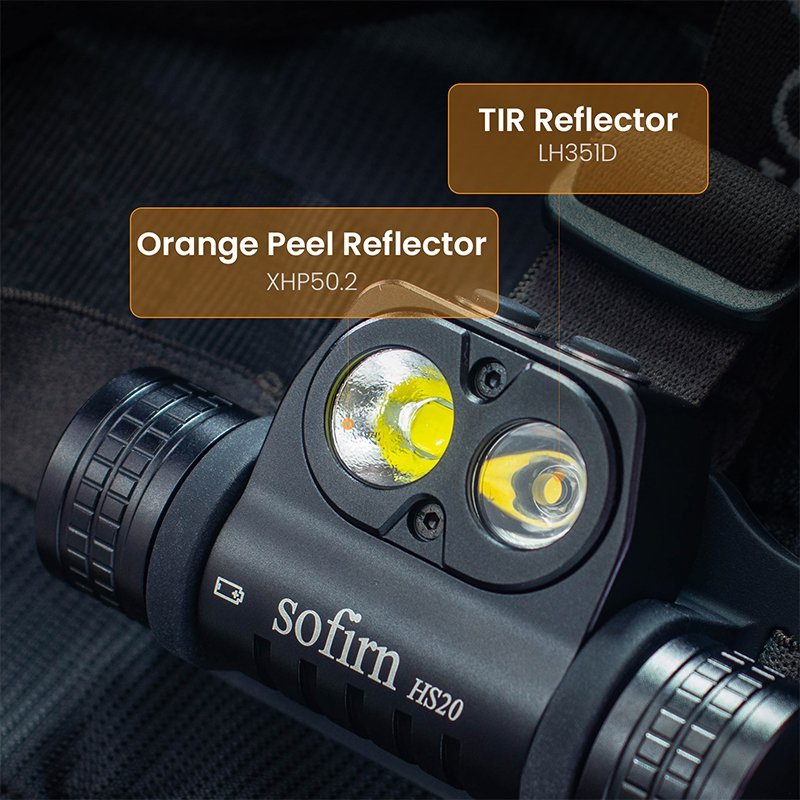
The first photo shows the beam profile of the spotlight, with the Cree XHP50.2 emitter and the shallow, orange peal reflector. The second photo shows the beam profile of the floodlight, with the Samsung LH351D emitter and the TIR optic. It is obvious that the first has a tighter hot spot than the second and as it also has more output, it is certain it will throw further.


In the last photo, we have the combined beam profile of both emitters.

Beam Shots
Here are some beam shots of the Sofirn HS20 flood light, spot light and dual emitters, at Low, Medium, High and Turbo.
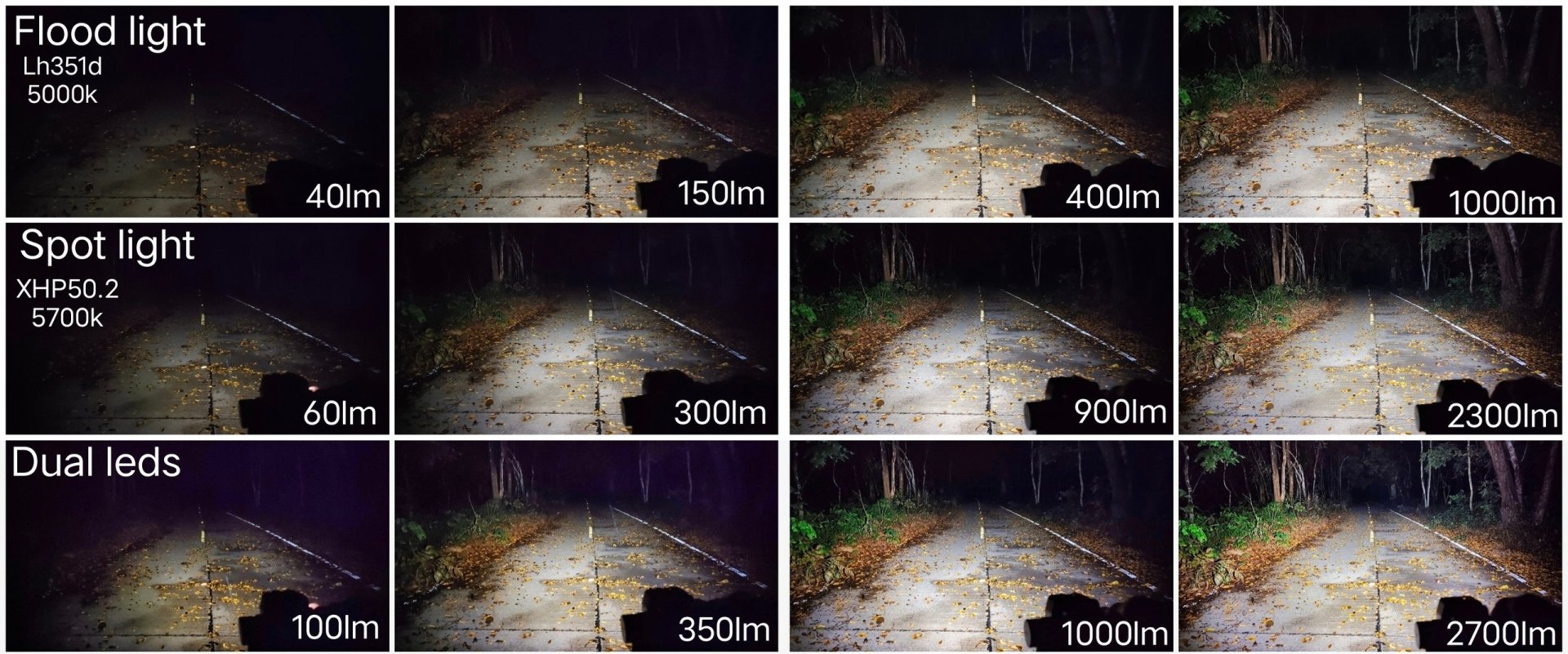

The following video shows a comparison of the Sofirn HS20 to the Sofirn HS10, on Turbo, using both emitters of the Sofirn HS20. The distance to the end of the alley is 70m.
Driver
The driver of the Sofirn HS20 features thermal step down, reverse polarity protection and low voltage protection. It is a FET driver and uses PWM on all modes to control the output. The PWM is of high frequency and not visible to the eye.
Here is the PWM when only the spotlight is on:





Here is the PWM when only the floodlight is on:





And this is the PWM with both emitters on:





The camera can see the PWM but the eye cannot.

Current Draw
The following table shows the current draw of the Sofirn HS20, using the included battery.

Charging
The Sofirn HS20 comes with USB C onboard charging.

The battery included with the Sofirn HS20 is rated at 3000mAh and I measured it at 3043mAh. The battery's internal resistance was measured at 50mΩ. It looks like the battery included with the Sofirn HS20 is of high quality.
The torch has under voltage protection and turns off when the battery voltage drops to 2.88V. Charging the battery of the Sofirn HS20 is very easy. Just plug the included USB A to USB C cable and any USB charger that can provide the required maximum current of 2A into the USB C socket on the torch to charge it. Using a lower output charger will still work but the charging will be slower and take more time. There is also support for USB C to USB C cable charging.

The indicative LED next to the USB C socket will turn red while the battery is charging and green to indicate a full charge.


Charging the Sofirn HS20 battery from 2.88V to 4.12V, where the charging terminated, took 2 hours, 28 minutes and 2 seconds, which is in accordance with the 2.5 hours charging specification. The maximum current drawn was 1.7688A.

Output & Runtimes
The Sofirn HS 20 is rated at a maximum output of 2700 Lumen and a maximum throw of 136m.
I do not own a multi thousand dollar worth integrating sphere, just a logging Lumen meter and a home made integrating tube. The array is calibrated with 3 separate, professionally measured lights and gives me consistent results, but there is definitely room for error and deviations are to be expected.
Running the Sofirn HS20 with the included battery and using both emitters yielded a maximum output of 2616 Lumen at turn on and 2456 Lumen at 30 seconds (ANSI). That is very close to spec. The outputs of the spotlight and floodlight emitters were also up to spec.
You can see the full runtimes of each emitter separately and both together, on Turbo, in the graph below.
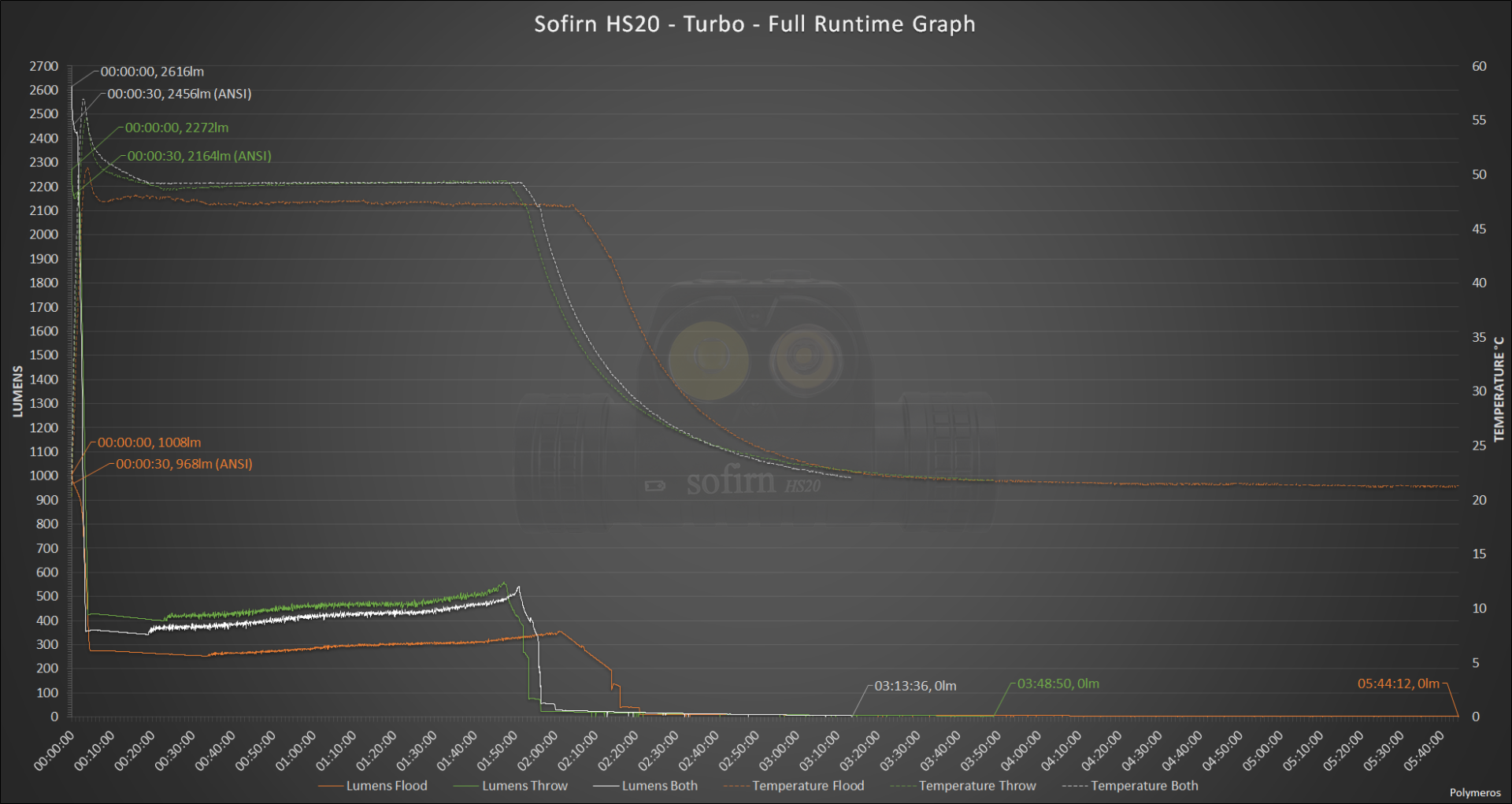
Here are the first 10 minutes, in greater detail.
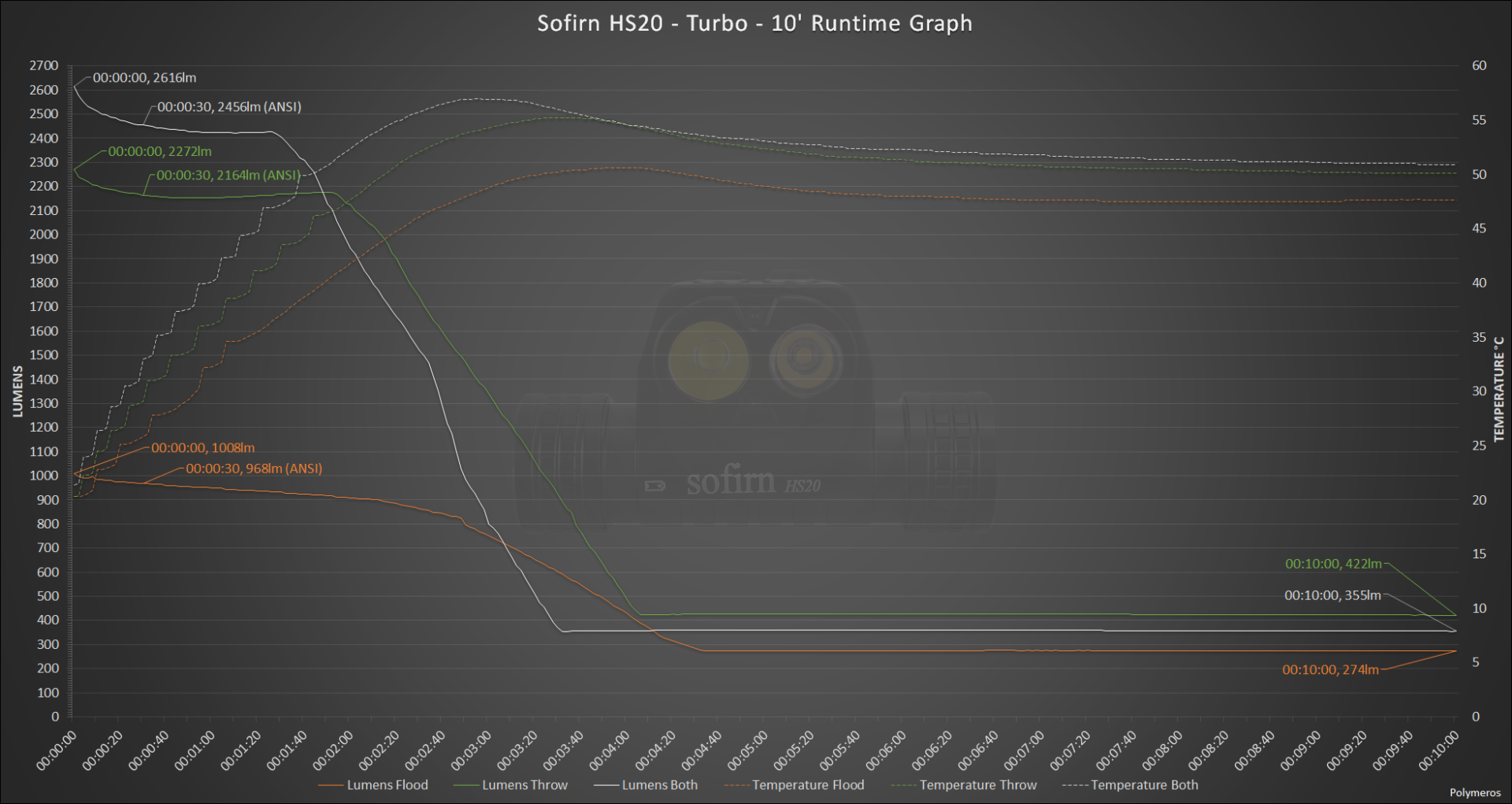
I measured the throw of the Sofirn HS20, using the included battery and both emitters, at 138m (4732cd). The spotlight was measured at 127m (4002cd) and the floodlight at 71m (1271cd).
Conclusion
The Sofirn HS20 is a value for money, dual head torch that includes a high CRI floodlight and a high power spotlight with independent controls and an intuitive and simple user interface.
It comes with a comfortable, adjustable head strap, USB C 2A charging and a 3000mAh 18650 battery.
The build quality is good and the design is very functional, but the finish could be better aesthetically, as there are some small imperfections in the milling, under the anodization.
The driver uses PWM to control the output in all modes, but the PWM is high frequency and not visible or in any way tiring to the eye. The driver also has thermal regulation, low voltage protection and reverse polarity protection.
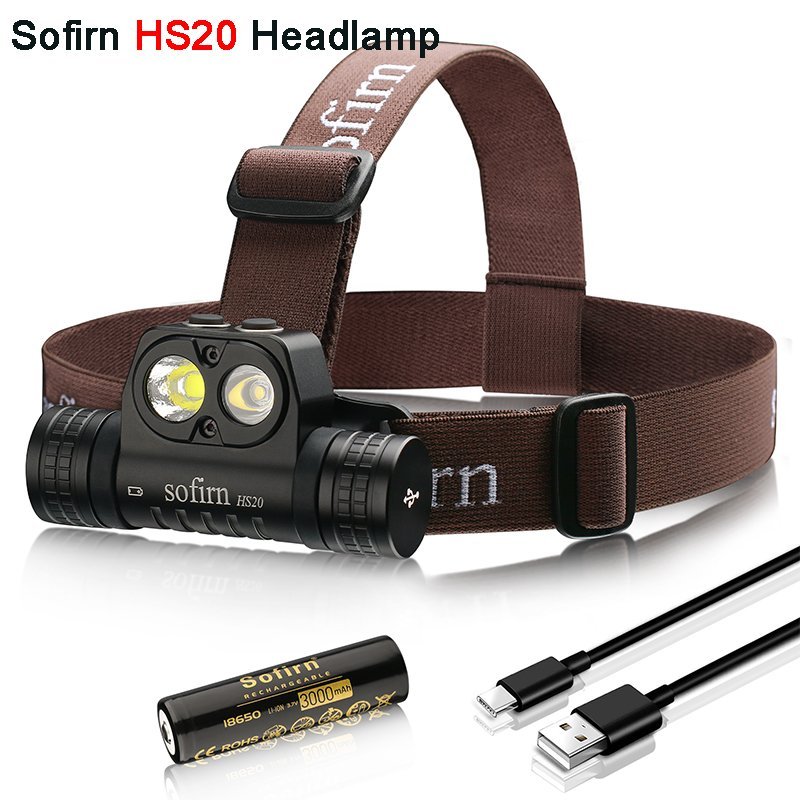
If you are in the UK, you can purchase the Sofirn HS20 from Amazon for £56.99, minus a 10% voucher available at the time of this review. From anywhere in the world, you can purchase it from the Sofirn Website for $41.99 plus the tax for your country. For Greece, the tax is $5.46 and brings the total cost to $47.45.
Let us summarise the pros and cons of the Sofirn HS20.

Pros
+ Dual emitters, 1 high output Cree XHP50.2 and 1 high CRI Samsung LH351D, with independent controls.
+ Simple and intuitive user interface.
+ High and true to spec output.
+ Temperature regulation, low voltage protection and reverse polarity protection.
+ USB C 2A onboard charging with USB C to USB C support.
+ 3000mAh 18650 Li-Ion battery included.
+ Comfortable and adjustable head strap.
+ IP68.
+ Value for money.

Cons
- Small imperfections in the milling, under the anodization.
Thanks to Sofirn for providing the torch for review
Polymeros Achaniotis 13/04/2022
-
 9
9



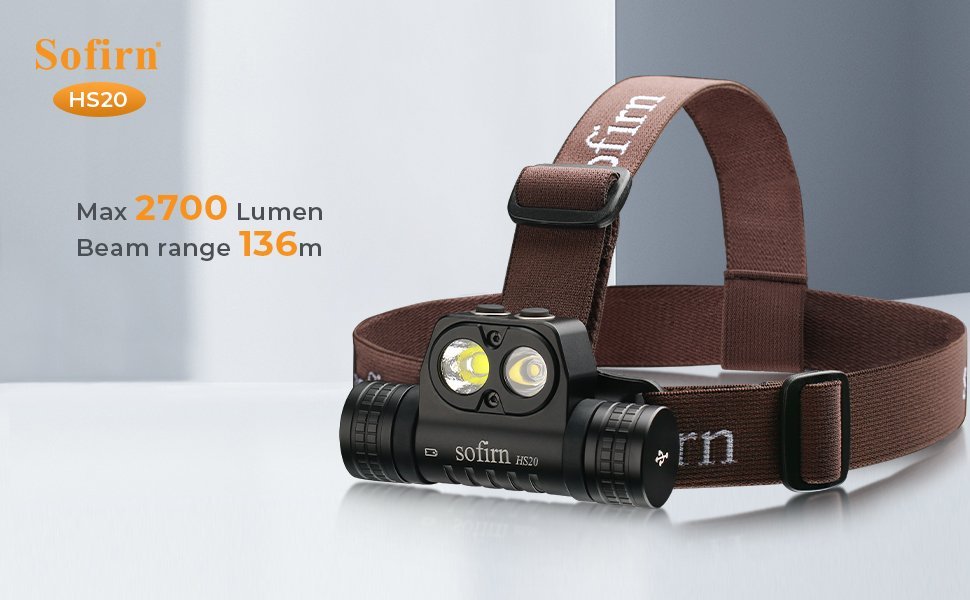





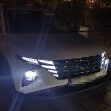



Recommended Comments
There are no comments to display.
Create an account or sign in to comment
You need to be a member in order to leave a comment
Create an account
Sign up for a new account in our community. It's easy!
Register a new accountSign in
Already have an account? Sign in here.
Sign In Now